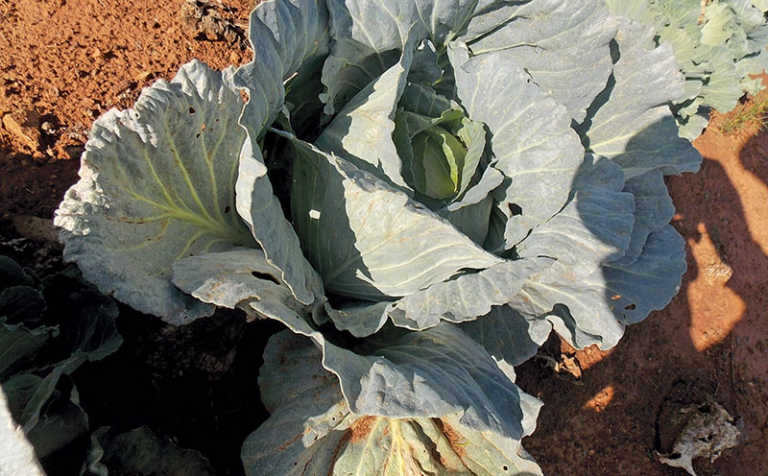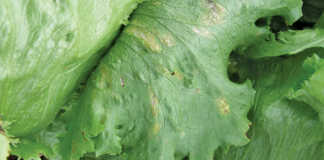
Frankliniella occidentalis, the western flower thrip, targets cabbages and a host of other crops.
It was introduced to South Africa accidentally through chrysanthemum cuttings, and has since become a problem for local brassica growers.
The insect attacks the underside of leaves, leaving light, irregular lesions that can be seen from above. The entire plant looks stressed and dull.
In young transplants, the leaves may become distorted.
The thrip causes damage by rasping the leaf with a specially developed jaw and then drinking the sap. Be vigilant with young plants, as hordes of thrips can do a great deal of damage in a short time.
If a crop infested with thrips is harvested, the insects will simply take to the air and invade another land. Thankfully, they are not a vector for any brassica diseases.
Thrips favour hot, dry conditions and are much less of a problem in winter and during rainy periods.
The danger of this pest is that it can fly into a land in great numbers, catching you unawares. Young plants are especially vulnerable. You should therefore inspect the plants regularly to check for thrips.
Merely doing preventative spraying for caterpillars, and glancing at the crop as you drive past occasionally could leave you open to serious damage by thrips.
Thrip control
As this pest operates on the underside of the leaves, a systemic product is best, because it is difficult to wet the underside of leaves, especially those near the ground.
The thrip has a rapid life-cycle and you should therefore use different products on occasion to prevent the build-up of resistance. Discuss this with a crop chemical representative.
Bagrada bugs
The second pest I want to focus on is the bagrada bug (Bagrada hilaris). This comes and goes and, like thrips, can take you by surprise.The bagrada bug breeds on various weeds and many cruciferous crops.
Be especially vigilant when growing oil radish for eelworm cyst control. B hilaris favours this crop and a huge mass can build up and migrate to your lands when the crop is worked in.
As a result, you may need to spray before working the crop into the soil.
Oil radish can alsohost the diamondback moth, a cabbage pest discussed in an earlier issue, but these are parasitised by wasps. Unfortunately, the insecticide used for bagrada bugs will also kill the wasps.
Bagrada bugs can be extremely harmful to a newly planted cabbage as they feed on the growing point, causing a ‘blind’ plant that forms bunches of small heads. They are particularly fond of pungent crops such as rocket, turnips, canola and Chinese brassicas, as well as crops that are under stress.
On older plants, the bugs favour the leaf edges, where they do less damage.
In the case of large plants, one plant may be heavily infested while others on the land may have few or no bugs on them.
Stressed plants more vulnerable
A plant with bug damage is stressed, and this may make the sap more pungent and hence more attractive to the bugs. The edge of the land, which can be under drought stress, can be attractive to them for the same reason.
Always keep an eye out for bagrada bugs on newly transplanted cabbages. The first sign is white blotches on the leaves, which also become distorted in the case of young plants.
This pest can do enormous damage in a short time. Last year, a farmer I know had to plough in the entire land because of it. Most damage seems to occur in spring and early summer. This probably ties in host crops and weeds growing in winter.
Tracking down the bug’s insect predators
This pest has recently arrived in North America and scientists are due to visit South Africa in 2015 to search for its natural enemies. Their work might be valuable for us too; if an insect predator is discovered, scientists here might be able to breed it up.
It stands to reason that the bagrada bug must have natural enemies – they simply have not been identified yet.
The only registered insecticide for the bagrada bug is parathion.
Unfortunately, this is very harsh.












